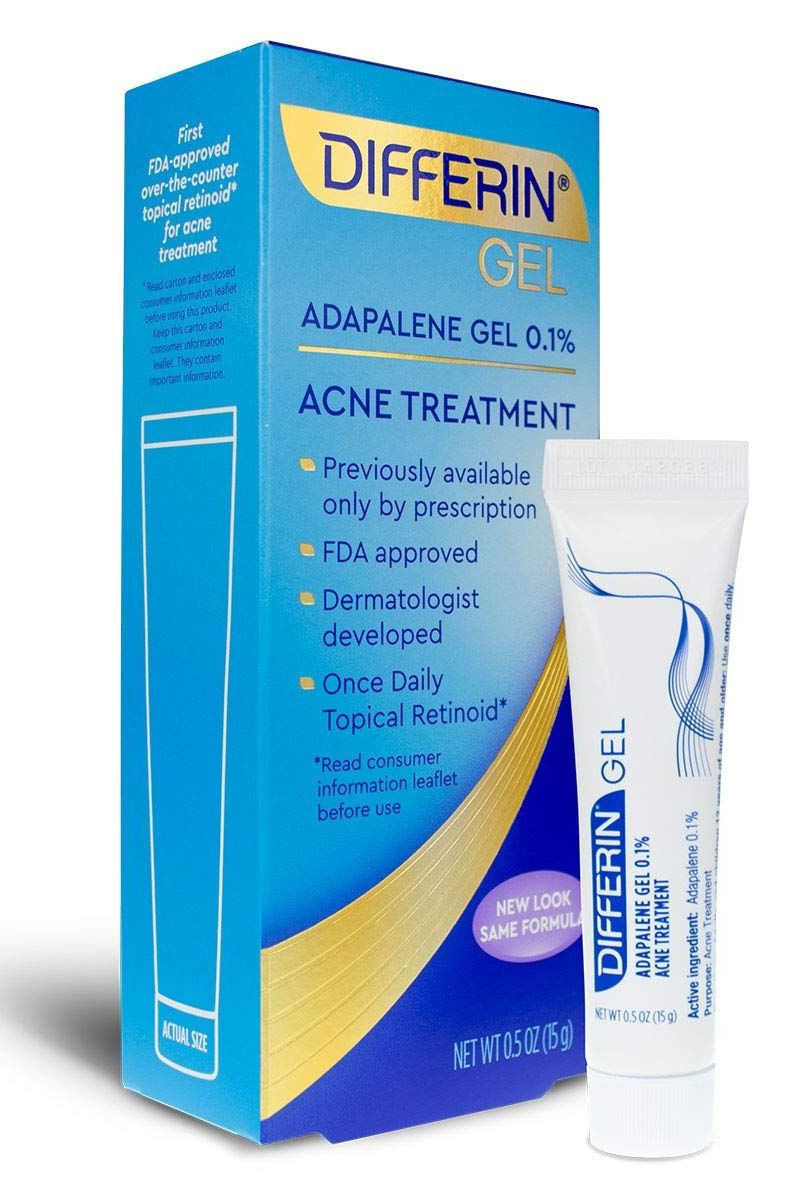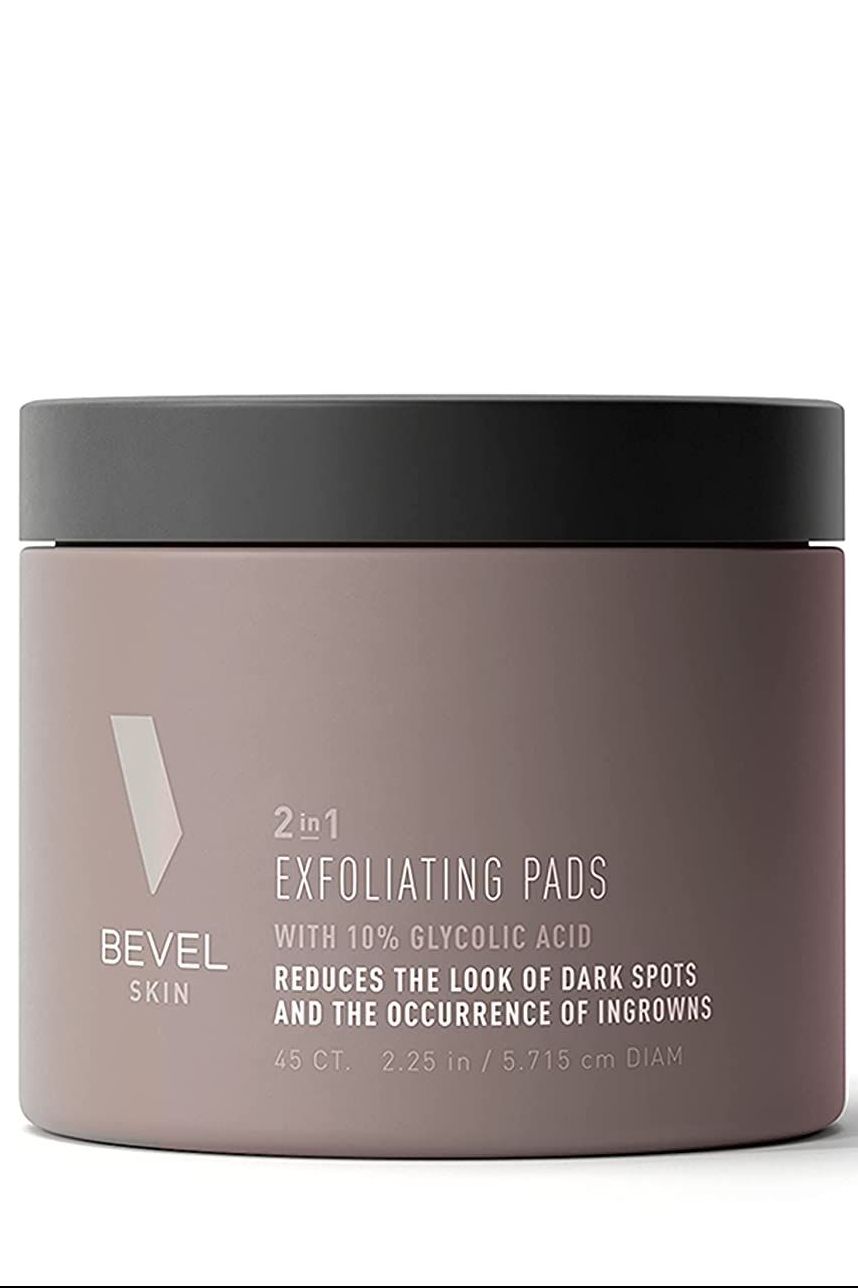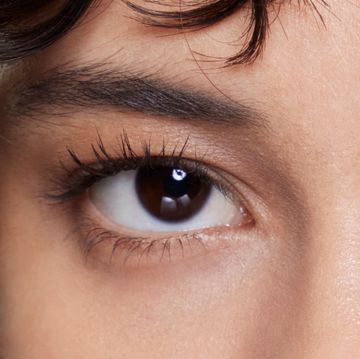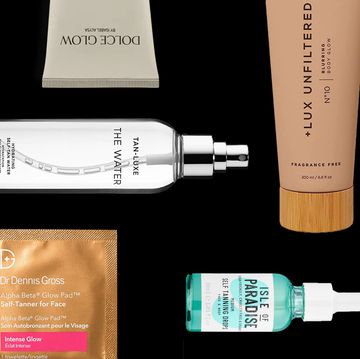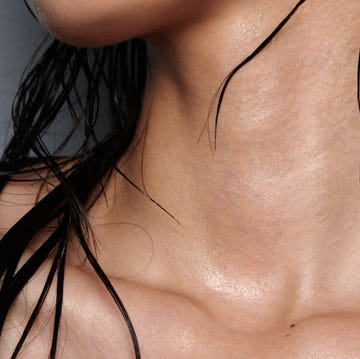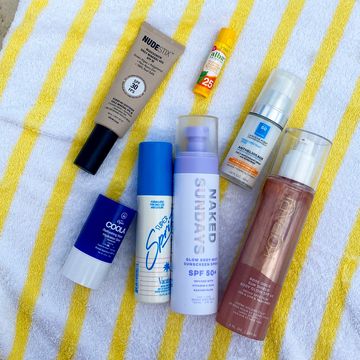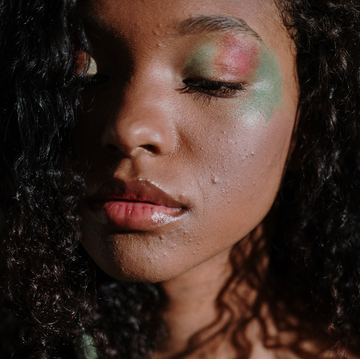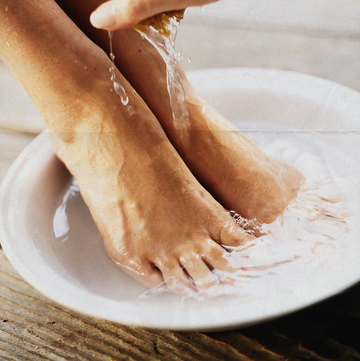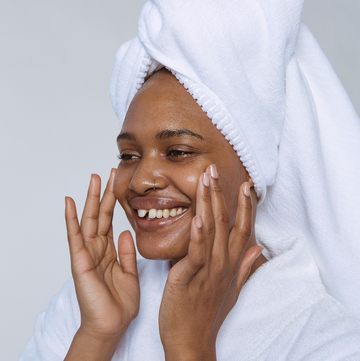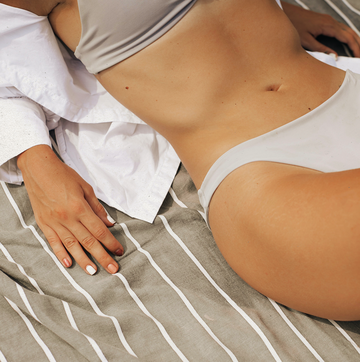Look, if popping pimples and picking at your face weren't so inexplicably satisfying, there wouldn't be actual toys inspired by squeezing clogged pores. But as you learned in high school, just because something is fun, doesn't mean it's a good idea, so let's talk about pore blockages, shall we? From what causes clogged pores, to how to get rid of clogged pores, to what even are clogged pores, the information online about congested skin is a little, um, ~congested~ itself.
So to help clear some things up for both your skin and your brain, we spoke to the experts about all things pore-related. So back away from the magnifying lighted mirror, and turn your attention to the below instead to help you finally get rid of those clogged pores.
Meet the experts:
- Courtney Rubin, MD, is a board-certified dermatologist at Comprehensive Dermatology Center of Pasadena in Pasadena, CA, and the cofounder and chief medical officer of Fig.1, a refillable skincare line.
- Shereene Idriss, MD, is a board-certified dermatologist and founder of Idriss Dermatology in New York, NY. Dr. Idriss, aka Pillowtalk Derm, is also a clinical instructor in dermatology at the Icahn School of Medicine at Mount Sinai.
- Joshua Zeichner, MD, is a board-certified dermatologist and the director of cosmetic and clinical research at Mount Sinai Hospital in New York, NY.
What are clogged pores?
In the simplest of terms, clogged pores are pores that have been blocked by a mixture of sebum and gunk. As a refresher, sebum is the oily liquid made from our sebaceous glands. The purpose of sebum is to keep the skin lubricated, but when the collection of that oil (aka sebum plug) (and aka sebaceous filament) is mixed with the wrong stuff (dead skin, bacteria, environmental debris), it can make small pores look bigger and make your skin appear congested.
What causes clogged pores?
Basically, we all have pores (yes, even that one friend with annoyingly perfect, seemingly poreless skin). These are small openings in the skin where hair follicles exist and where your sweat glands and sebaceous glands can empty their contents onto the surface of the skin, as explained by board-certified dermatologist Courtney Rubin, MD.
If you have clogged or congested pores, it might be because your skin overproduces sebum or you may have an accumulation of dead skin cells and other debris (like makeup) in your pores. Dr. Rubin says all of this increases the risk that the pore could become blocked, and blocked pores can lead to, yup, acne.
What do clogged pores look like?
When your pores are clogged, they can appear larger and maybe even darker, or as board-certified dermatologist Shereene Idriss, MD, describes it, they can create the appearance of black dots on your face. If you’re confused as all hell because you thought you had clogged pores but now you don’t know the difference between those and blackheads, you’re not alone.
How do you know if you have clogged pores?
Joshua Zeichner, MD, board-certified dermatologist, says even dermatologists don’t agree on the distinction between a lot of similar terms that are often used interchangeably. But don’t stress. Whether your pores are full of sebum plugs (sebaceous filaments) or a combination of sebum, dirt, and dead skin (clogged pores and congestion) or an oxidized pore plug (a blackhead), the difference in terminology isn’t that important because they’re all treated similarly. This leads us to what you really came here for…
Should you squeeze clogged pores?
You already know the answer to that (it’s a no-go), and FWIW, squeezing out your sebum plugs won't get rid of your clogged pores. “If you constantly squeeze your pores, the wear and tear of squeezing will eventually make your pores bigger over time, so I don’t usually recommend this method,” Dr. Idriss says.
How do you unclog your pores?
So if you can’t squeeze your pores, how are you supposed to get the crap out of them? What with all the pore vaccums, facial cleansing brushes, and pore strips, you might think you need a special gadget to suck and pluck the gunk—but that's not the case. “I don’t usually recommend instrumenting the face in order to unclog pores,” Dr. Rubin says. “They will just fill up again, and instrumentation can lead to inflammation or scarring.”
Try exfoliating instead, but not with the harsh, scrubby, burns-but-feels-good exfoliators. Dr. Idriss and Dr. Zeichner recommend chemical exfoliants, like salicylic acid, to dissolve excess oil and the dead skin cells that block the pores. “I don’t love physical scrubs,” says Dr. Idriss. “They are not specific to the clogged-pore problem and can lead to more wear and tear.”
What gets rid of clogged pores?
As far as getting rid of clogged pores for good, skip anything manually abrasive and try something that'll actually address the source of the clogged pores. Dr. Rubin's favorite recommendation is a topical retinoid, like a night cream with retinol in it. “Retinoids address the root cause of pore congestion by decreasing sebum production and by helping dead skin cells slough away properly (rather than sticking to themselves and causing blockages),” Dr. Rubin explains.
Dr. Zeichner is also a fan of retinoids for clogged pores, either one prescribed by a doctor or one from the drugstore. “Over-the-counter retinoids like adapalane help calm inflammation in the skin and prevent cells from sticking together and blocking the follicles,” Dr. Zeichner says. “Think of them like pipe cleaners to keep the pores open.” And while you’re shopping for those products, go ahead and add a clay or charcoal mask to your cart, which Dr. Zeichner says could also help absorb excess oil.
How do clogged pores form on the nose and chin?
Remember: Clogged pores are caused by mixing oil with dead skin and debris. As Dr. Idriss explains, “With increased oil production, there tends to be more dirt.” Because your nose and chin are some of the oilier areas of your face, you’re more likely to find clogged pores in these two places.
Can you actually unclog pores?
The answer to this is murky at best. While it might be possible to remove a lot of buildup in the pores, you likely can’t remove all of it. “I think there will always be a certain amount of ‘cloggage’ in your pores, but you can lighten or limit the appearance of pores with a solid skincare routine,” Dr. Idriss says. And Dr. Zeichner adds that any unclogging you do achieve won’t last long, sadly. “Our body continually produces more oil, so clearing blockages gives only a temporary effect. The pores usually fill up again within a few days.”
With that said, if you stick with a gentle exfoliating skincare routine, avoid ingredients that are known to clog pores (like too-thick creams and coconut oil), and keep your fingers off your face, you’re likely to see an improvement in the appearance of your clogged pores within a few weeks.
Why does the same pore keep getting clogged?
Aside from the fact that your pores filling up with sebum is just something your skin does whether you like it or not, skin congestion that never seems to go away could also be due to other parts of your skincare routine. As great as slugging (a nickname for layering an occlusive like Vaseline on top of your skin to lock-in moisture) is for dry skin, Dr. Rubin says it can also lock-in excess oil and debris, so you might want to pass on it if you have an oily, acne-prone face. If you wear makeup, try to avoid heavy formulas or full-coverage foundation (especially underneath a mask) and make sure to wash your face or double-cleanse regularly.
The takeaway:
Can you get rid of clogged pores? Not forever, no. But can you minimize the clogs and blockages and stop it from becoming full-blown acne? With the right products and skincare routine, absolutely—and you don't need to shell out big bucks on a fancy skincare tool to do it, either. But if you can't keep your hands off your face, one of those squeezable toys might be a good investment. Just a suggestion! Take it or leave it, but leave your face alone, k?

Brooke Shunatona is a contributing writer for Cosmopolitan.com.


